Afghanistan Biodiversity and the Built Environment
- Jackie De Burca
- February 29, 2024
Afghanistan Biodiversity and the Built Environment
Afghanistan is known for its rich biodiversity and the challenges it faces in managing and protecting its natural resources. The intersection between biodiversity and the built environment is an important topic, as urban development can have significant impacts on ecological diversity and wildlife habitats. It is crucial to incorporate sustainable practices and biodiversity management into urban planning to ensure a harmonious environment. Afghanistan was also featured at COP 28: A call for urgency and solidarity as Afghanistan bears the weight of climate injustice.
Afghanistan Biodiversity and the Built Environment Key Takeaways:
- Afghanistan’s biodiversity is a valuable asset that needs conservation.
- Sustainable development is essential to minimise the negative impacts of urbanisation on biodiversity.
- Urban planning plays a critical role in protecting and enhancing biodiversity in urban areas.
- Biodiversity management strategies are necessary to address the challenges posed by rapid urbanisation.
- Collaboration and partnerships among stakeholders are vital for successful biodiversity conservation.
The Importance of Biodiversity Conservation in Afghanistan
Afghanistan is blessed with diverse ecosystems that encompass mountains, wetlands, and forests, providing a habitat for a wide variety of plant and animal species. The conservation of biodiversity in Afghanistan holds immense significance for several reasons.
Biodiversity is essential for maintaining the delicate ecological balance in these ecosystems and ensuring the survival of numerous species. Each organism plays a unique role in the ecosystem, contributing to its overall health and stability. By protecting biodiversity, we safeguard the intricate web of life that exists in Afghanistan’s natural landscapes.
Furthermore, the preservation of biodiversity is essential for the continuation of ecosystem services. Ecosystems provide critical functions, such as water filtration, soil formation, and climate regulation, which are crucial for human well-being. A loss of biodiversity can disrupt these services, impacting our access to clean water, fertile soil, and a stable climate.
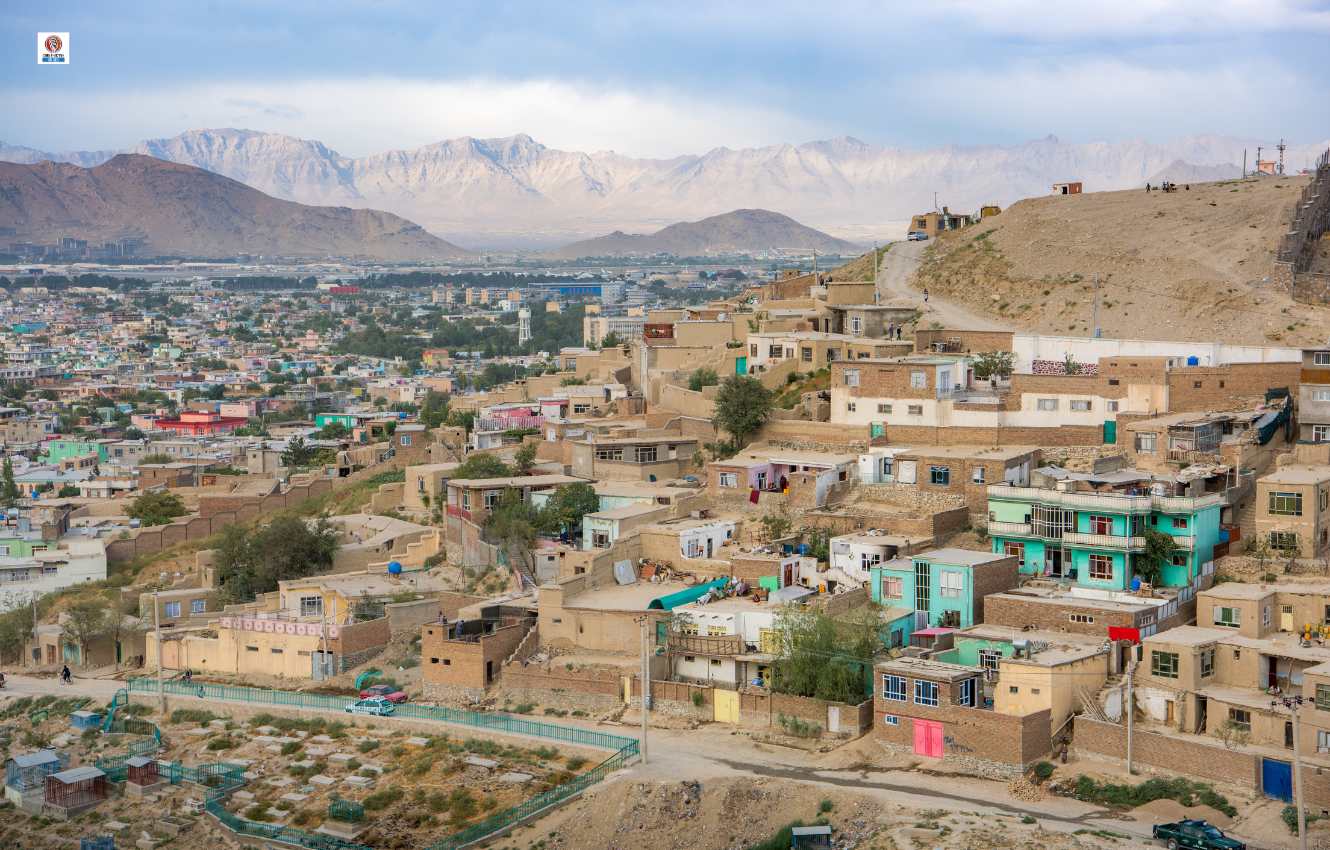
Another significant aspect is the preservation of genetic resources. Each species carries a distinct set of genetic information and adaptations that have evolved over thousands of years. This genetic diversity holds immense value for scientific research, agriculture, and medicine. Losing species means losing the potential benefits that their genetic resources can offer in addressing various challenges.
Lastly, biodiversity conservation is vital for food security. Many plant and animal species contribute directly or indirectly to the food we consume. By maintaining diverse ecosystems, we ensure the availability of different food sources, enhance resilience in the face of environmental changes, and reduce the risk of crop failures or other agricultural challenges.
Recognising the importance of preserving biodiversity, Afghanistan must prioritise efforts to protect its unique natural heritage for the benefit of current and future generations. Through dedicated conservation initiatives and sustainable practices, we can ensure the continued existence of diverse ecosystems and promote a harmonious relationship between human development and the natural world.
Challenges to Biodiversity in Afghanistan’s Urban Areas
Rapid urbanisation in Afghanistan has led to significant challenges in preserving biodiversity. As urban areas expand, there is a direct impact on the environment, resulting in habitat degradation, fragmentation, and loss. This creates a critical challenge for the conservation of Afghanistan’s rich biodiversity.
Urbanisation often leads to the destruction of natural habitats, forcing many species to either adapt or face displacement. The introduction of invasive species is also a common consequence of urban growth, further altering the natural balance of ecosystems. Additionally, pollution levels increase as urban areas become more populated and industrialised, affecting both wildlife populations and the overall health of the environment.
To address these challenges and mitigate the negative impacts on biodiversity, sustainable urban planning is crucial. Implementing green infrastructure, such as parks, green roofs, and urban forests, can help create new habitats and connect fragmented ones. Biodiversity management strategies, like conservation programmes and protected areas, can also play a significant role in preserving and restoring urban biodiversity.
“The destruction of natural habitats and the introduction of invasive species in urban areas have negatively impacted wildlife populations and biodiversity.” –
By integrating these strategies into urban development, it is possible to create a more sustainable and biodiverse urban environment in Afghanistan. This holistic approach ensures that urbanisation and conservation can coexist, providing opportunities for both humans and wildlife to thrive.
How Afghanistan’s Biodiversity Was Affected by War
Overall, recognising and addressing the challenges posed by urbanisation is vital in ensuring the long-term sustainability of Afghanistan’s biodiversity. Through sustainable urban planning, biodiversity management, and public awareness, it is possible to create a harmonious balance between urban areas and the natural environment.
War has had significant and multifaceted impacts on biodiversity in Afghanistan. The prolonged conflict has directly and indirectly affected the country’s ecosystems, wildlife, and natural resources. Here are some key ways in which war has influenced biodiversity in Afghanistan:
Direct Impacts
- Habitat Destruction: Military activities, including bombings, construction of military bases, and landmine deployment, have led to the destruction of habitats. Forests, grasslands, and wetlands have been particularly affected, disrupting the living conditions for many species.
- Wildlife Mortality: Explosions, gunfire, and other forms of combat have resulted in the direct killing of wildlife. Large mammals, birds, and other animals have been caught in the crossfire or have been killed due to the destruction of their habitats.
- Chemical Pollution: The use of chemical weapons and the residue from explosives can contaminate soil and water sources. This pollution affects both plant and animal life, leading to toxic environments that can decimate local biodiversity.
Indirect Impacts
- Illegal Hunting and Poaching: The breakdown of law and order during times of war often leads to increased illegal hunting and poaching. Endangered species such as the snow leopard, Marco Polo sheep, and various bird species have been particularly vulnerable.
- Deforestation: War-induced socio-economic instability has driven people to rely more heavily on natural resources for survival. This includes cutting down forests for firewood, construction materials, and clearing land for agriculture. Deforestation leads to habitat loss and fragmentation, threatening numerous species.
- Displacement of Human Populations: Large-scale displacement of human populations due to conflict leads to increased pressure on natural resources in certain areas as refugees and internally displaced persons (IDPs) seek shelter and livelihoods. This often results in overgrazing, overfishing, and further deforestation.
- Disruption of Conservation Efforts: War disrupts conservation programmes and efforts. Protected areas may become inaccessible, and conservation projects may lose funding or personnel. This leads to neglected management of natural reserves and parks, allowing for illegal activities like logging and poaching to flourish.
Examples and Case Studies
- Bamyan Valley: Home to several unique species and significant biodiversity, the Bamyan Valley has seen extensive habitat destruction due to military operations. The presence of landmines has further restricted movement and conservation efforts in the area.
- Pamir Mountains: This region is crucial for species such as the Marco Polo sheep. Military activities and the presence of armed groups have increased poaching and reduced the effectiveness of conservation efforts.
- Hindu Kush and Central Highlands: These areas have experienced habitat fragmentation and increased hunting pressure due to the ongoing conflict, severely impacting species like the snow leopard.
Conclusion
The impact of war on biodiversity in Afghanistan is profound and long-lasting. Restoring ecosystems and protecting biodiversity in post-conflict Afghanistan requires concerted efforts involving demilitarisation, habitat restoration, enforcement of anti-poaching laws, and the revival of conservation programs. International support and collaboration with local communities will be crucial in these endeavours to ensure the preservation and recovery of Afghanistan’s rich but threatened biodiversity.
Sustainable Urban Planning for Biodiversity Conservation
Sustainable urban planning plays a crucial role in protecting biodiversity in built environments. By incorporating green infrastructure, biodiversity-friendly design features, and holistic urban development practices, we can create a more harmonious environment that supports both human needs and biodiversity conservation.
Green Infrastructure: Creating Habitats and Corridors
Green infrastructure refers to the strategic integration of natural elements, such as parks, green roofs, and urban forests, into urban design. These features not only enhance the aesthetic appeal of cities but also provide essential habitats and corridors for wildlife. By creating green spaces within urban areas, we can ensure that biodiversity thrives alongside urban development. For example, parks act as refuges for native flora and fauna, allowing them to inhabit and flourish in urban environments.
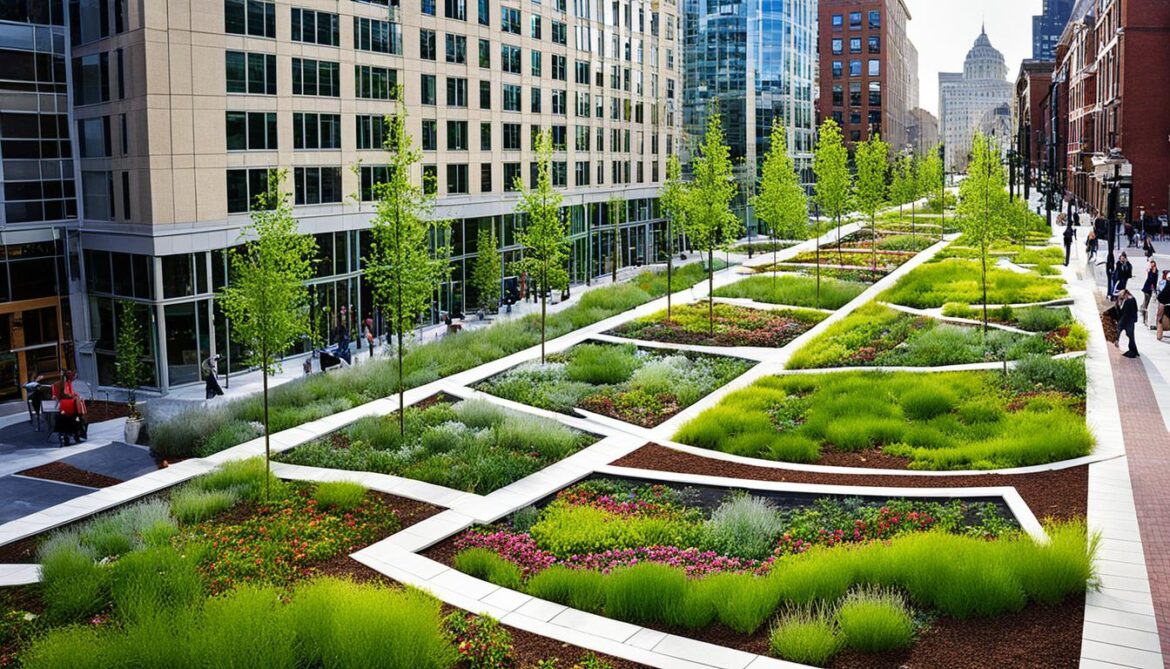
Biodiversity-Friendly Design Features
Biodiversity-friendly design features focus on enhancing urban ecosystems and promoting the coexistence of humans and wildlife. Native plantings, for instance, attract local wildlife species, including birds, butterflies, and bees. These plants provide food, shelter, and nesting habitats, contributing to the overall biodiversity of the area. Similarly, wildlife-friendly structures such as birdhouses, bat boxes, and insect hotels can provide safe havens for various species, further enriching urban ecosystems.
Integrated Approaches to Urban Development
To truly protect biodiversity, it is essential to adopt integrated approaches to urban development. This involves considering the interconnectedness of natural systems and incorporating biodiversity conservation principles into urban planning and design. By recognising the importance of ecosystems, green spaces, and ecological connectivity, we can create sustainable urban environments that not only benefit human well-being but also support the diverse array of species that call these areas home.
| Benefits of Sustainable Urban Planning for Biodiversity Conservation | Examples |
|---|---|
| Promotes species diversity and ecological resilience | Creation of urban forests that provide habitat for a variety of plant and animal species |
| Improves air and water quality | Green roofs and permeable surfaces that reduce stormwater runoff and filter pollutants |
| Enhances urban aesthetics | Parks and green spaces that provide recreational opportunities and improve the overall quality of life |
| Supports ecosystem services | Preservation of wetlands and water bodies that regulate water flow and provide habitats for aquatic species |
Biodiversity Management in Urban Areas
Effective biodiversity management in urban areas plays a crucial role in conserving the diverse natural resources of Afghanistan. By implementing monitoring and conservation initiatives, we can actively protect and preserve the urban biodiversity hotspots that exist within our cities. These initiatives involve conducting biodiversity surveys, identifying key wildlife species, and implementing conservation strategies tailored specifically to the unique challenges and opportunities presented by urban environments.
In order to better understand and manage urban biodiversity, conducting regular biodiversity surveys is essential. These surveys allow us to assess the health and abundance of species within urban areas, identify any threats or declines in biodiversity, and track the effectiveness of our conservation efforts. By monitoring the biodiversity in our cities, we can make informed decisions and take appropriate actions to protect the delicate balance between urban development and ecological diversity.
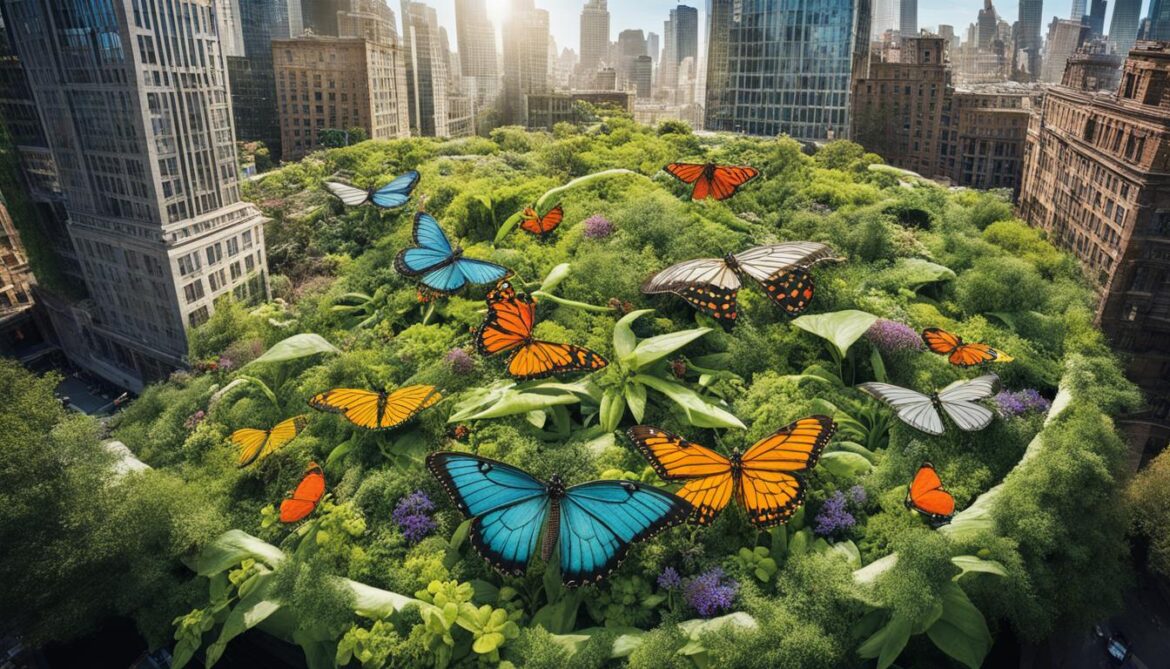
Conservation initiatives are also vital in safeguarding the biodiversity hotspots within our urban areas. These initiatives involve implementing targeted measures to protect and enhance the habitats that support diverse wildlife populations. By focusing on key areas of biodiversity importance, such as parks, green spaces, and urban forests, we can create sanctuaries for native flora and fauna, while also providing valuable ecosystem services to surrounding communities.
The Role of Citizen Science and Community Engagement Programmes
Biodiversity management in urban areas is not solely the responsibility of government agencies and conservation organisations. Urban dwellers can also contribute to the protection and conservation of biodiversity through citizen science initiatives and community engagement programmes. By actively engaging with local communities and encouraging their participation in biodiversity monitoring and conservation, we can foster a sense of ownership and stewardship over the natural resources that surround us.
Citizen science initiatives involve harnessing the power of individuals to collect data on species sightings, habitat quality, and environmental changes. By involving the public in data collection and analysis, we can gather valuable information over a large geographical area and increase our understanding of urban biodiversity patterns. Community engagement programmes, on the other hand, aim to raise awareness about the importance of biodiversity and empower individuals to actively contribute to its conservation through sustainable practices and advocacy.
Examples of Biodiversity Management Initiatives in Urban Areas
| City | Biodiversity Management Initiative |
|---|---|
| Kabul | Creation of urban green corridors connecting parks and protected areas |
| Herat | Implementation of rooftop gardens and vertical greenery systems in high-density areas |
| Mazar-e-Sharif | Restoration of degraded wetlands to enhance habitat for migratory birds |
Biodiversity management in urban areas is a collective effort that requires collaboration between government agencies, environmental organisations, and the public. By working together, we can create sustainable and resilient cities that prioritize biodiversity conservation and coexist harmoniously with nature.
Integrating Biodiversity into Urban Development Policies
Integrating biodiversity into urban development policies is crucial for the long-term conservation of natural resources in Afghanistan. It is necessary to incorporate biodiversity considerations into land use planning, environmental impact assessments, and development regulations to ensure a sustainable future.
By establishing clear policies and guidelines that prioritise biodiversity conservation, we can minimise the adverse impacts of urban development on ecosystems and promote sustainable practices. This includes:
- Integrating biodiversity objectives into land use planning processes
- Conducting comprehensive environmental impact assessments to assess the potential effects on biodiversity
- Monitoring and enforcing environmental regulations to prevent habitat destruction and pollution
These measures will help protect and manage Afghanistan’s unique biodiversity, ensuring its survival for future generations.
“Integrating biodiversity considerations into urban development policies is a crucial step towards creating environmentally sustainable cities that coexist with nature.” – Dr. Sarah Wilson, Environmental Consultant
By prioritising biodiversity in urban development policies, we can achieve a balance between human needs and the preservation of natural habitats. This approach not only benefits wildlife populations but also enhances the overall quality of life for urban residents.

| Benefits of Integrating Biodiversity into Urban Development Policies | Examples |
|---|---|
| Promotes ecosystem resilience | Protection of critical habitats through designated conservation areas |
| Enhances urban biodiversity | Creation of wildlife-friendly green spaces, such as urban parks and gardens |
| Improves air and water quality | Encouragement of sustainable transport systems and the preservation of water bodies |
| Enhances aesthetic value | Integration of natural elements into urban design, such as green roofs and vertical gardens |
Biodiversity Conservation and Sustainable Development
Integrating biodiversity into urban development policies aligns with the principles of sustainable development. By protecting and managing biodiversity, we ensure the sustainable use of natural resources and the preservation of ecological processes that support human well-being.
Sustainable urban development not only safeguards biodiversity but also contributes to climate change mitigation, water resource management, and the promotion of healthier, more inclusive communities.
The Role of Education and Awareness in Biodiversity Conservation
Education and awareness play a crucial role in promoting biodiversity conservation. By raising public awareness about the importance of biodiversity and the impacts of urban development, individuals can make more informed decisions and adopt sustainable behaviors. Environmental education programmes can also foster a greater understanding and appreciation for nature, instilling a sense of responsibility for biodiversity conservation among future generations.
When it comes to Afghanistan’s biodiversity and the built environment, education is key to cultivating a strong conservation ethic. By providing accessible and engaging environmental education initiatives, communities can develop a deeper understanding of their local ecosystems and the value of biodiversity. This education can take various forms, including workshops, nature walks, and interactive exhibits that highlight the interconnectedness of all living beings.
“Education is the most powerful weapon we can use to change the world.” – Nelson Mandela
Through education, individuals gain the knowledge necessary to make informed choices that positively impact biodiversity conservation. They can learn about sustainable practices that minimise their ecological footprint, such as responsible waste management, sustainable agriculture, and energy conservation. This knowledge empowers individuals to take action in their daily lives, making conscious decisions that support biodiversity and protect the natural environment.
In addition to education, raising public awareness is crucial to garnering support for biodiversity conservation efforts. By highlighting the benefits of a biodiverse environment, such as clean air, water, and ecosystem services, people can understand the significance of preserving and restoring natural habitats. Awareness campaigns, public outreach programmes, and media initiatives can all play a vital role in shaping public opinion and fostering a sense of collective responsibility for protecting Afghanistan’s biodiversity.
It is important to engage not only adults but also young people in biodiversity conservation. By integrating environmental education into school curriculum and extracurricular activities, children and teenagers can develop a lifelong appreciation for nature and a sense of stewardship towards the environment. Environmental education can nurture their curiosity, inspire critical thinking, and empower them to become advocates for biodiversity conservation.
The Power of Sustainable Behaviour
Education and awareness go hand in hand with promoting sustainable behaviour. By understanding the interconnectedness of the natural world and human activities, individuals can change their behaviour to minimise negative impacts on biodiversity. Simple actions, such as reducing waste, conserving water, planting native species, and supporting local conservation initiatives, can all contribute to a more sustainable future.
It is essential to create a culture of environmental responsibility and sustainable living in Afghanistan. By providing accessible information and resources, individuals can easily incorporate sustainable practices into their daily lives. Local communities, government agencies, and non-profit organisations can collaborate to offer workshops, resources, and incentives that encourage sustainable behaviour and foster a sense of collective responsibility for biodiversity conservation.
Ultimately, education and awareness are catalysts for positive change. By educating individuals about the critical role of biodiversity in ecosystem health and human well-being, and creating awareness of the threats it faces, Afghanistan can inspire a collective effort to protect and conserve its unique natural heritage.

By nurturing a generation of environmentally conscious individuals through education and awareness, Afghanistan can pave the way for sustainable development that respects and preserves its rich biodiversity for future generations to enjoy.
Collaboration and Partnerships for Biodiversity Conservation
Collaboration and partnerships among various stakeholders are vital for successful biodiversity conservation in Afghanistan. This includes cooperation between government agencies, non-governmental organizations, academic institutions, and international organizations. By working together, sharing knowledge and resources, and implementing joint conservation projects, it is possible to achieve more significant and lasting impacts in protecting and managing Afghanistan’s biodiversity.
Stakeholders in biodiversity conservation play a crucial role in contributing their expertise, resources, and influence to address the challenges faced by Afghanistan’s biodiversity. Government agencies, such as the Ministry of Environment and the Ministry of Urban Development, can provide policy support and guidance to integrate biodiversity considerations into urban planning and development.
Collaboration between international organizations, such as the United Nations Development Programme (UNDP) and the International Union for Conservation of Nature (IUCN), can bring technical expertise, funding opportunities, and global best practices to support biodiversity conservation efforts in Afghanistan.
Non-governmental organisations (NGOs), such as the Wildlife Conservation Society and the Afghanistan Environmental Society, play a vital role in implementing on-the-ground conservation initiatives, conducting research, and raising public awareness about the importance of biodiversity.
In addition, academic institutions and research organisations can contribute scientific knowledge and expertise to inform biodiversity conservation strategies and develop innovative solutions to address the unique challenges faced by Afghanistan’s biodiversity in the built environment.
Collaboration and partnerships foster a more holistic approach to biodiversity conservation, ensuring the integration of diverse perspectives, resources, and actions. By pooling together efforts and expertise, stakeholders can overcome barriers, leverage each other’s strengths, and achieve more sustainable and effective outcomes in protecting and managing Afghanistan’s rich biodiversity.

Key stakeholders for biodiversity conservation in Afghanistan:
- Government agencies
- Non-governmental organisations (NGOs)
- Academic institutions and research organisations
- International organisations
Conclusion
The intersection between Afghanistan’s rich biodiversity and the built environment presents both opportunities and challenges for the nation. To ensure a sustainable future, it is crucial to integrate sustainable practices, green infrastructure, and biodiversity management into urban planning and development.
By incorporating sustainable practices such as green infrastructure, which includes parks and urban forests, into urban design, we can create habitats and corridors that support urban biodiversity. Additionally, implementing biodiversity-friendly design features like native plantings and wildlife-friendly structures can enhance urban ecosystems and promote biodiversity conservation.
Collaboration among various stakeholders, including government agencies, non-governmental organisations, academic institutions, and international organisations, is key to achieving successful biodiversity management. By working together, sharing knowledge and resources, and implementing joint conservation projects, Afghanistan can make a significant and lasting impact on its biodiversity.
Education and public awareness are also vital in promoting biodiversity conservation. By raising awareness about the importance of biodiversity and the impacts of urban development, we can encourage individuals to adopt sustainable behaviours and contribute to the protection and preservation of Afghanistan’s unique natural resources.
FAQ
What is the significance of biodiversity conservation in Afghanistan?
Biodiversity conservation is crucial for maintaining ecological balance, preserving genetic resources, and ensuring food security. In Afghanistan, it is vital to protect the diverse ecosystems, plant and animal species that contribute to the country’s rich biodiversity.
What challenges does urbanisation pose to biodiversity in Afghanistan?
Urbanisation in Afghanistan has resulted in habitat degradation, fragmentation, and loss, leading to a decline in biodiversity. Destruction of natural habitats, the introduction of invasive species, and increased pollution levels are some of the key challenges faced by wildlife populations in urban areas.
How can sustainable urban planning contribute to biodiversity conservation?
By incorporating green infrastructure, such as parks and urban forests, into urban design, sustainable urban planning creates habitats and corridors for wildlife. Biodiversity-friendly design features, such as native plantings and wildlife-friendly structures, can also enhance urban ecosystems.
What initiatives are involved in biodiversity management in urban areas?
Biodiversity management in urban areas includes conducting biodiversity surveys, identifying key wildlife species, and implementing conservation strategies tailored to urban biodiversity hotspots. Citizen science initiatives and community engagement programs also play a role in involving urban dwellers in biodiversity conservation.
How can biodiversity be integrated into urban development policies?
It is essential to incorporate biodiversity considerations into land use planning, environmental impact assessments, and development regulations. Clear policies and guidelines prioritise biodiversity conservation, minimising adverse impacts on ecosystems and promoting sustainable practices.
What is the role of education and awareness in biodiversity conservation?
Education and public awareness raise awareness about the importance of biodiversity and the impacts of urban development. Environmental education programmes foster understanding and appreciation for nature, encourage sustainable behaviours and instill a sense of responsibility for biodiversity conservation.
How can collaboration and partnerships contribute to biodiversity conservation in Afghanistan?
Collaboration among government agencies, non-governmental organisations, academic institutions, and international organisations is vital for successful biodiversity conservation. By working together, sharing knowledge and resources, and implementing joint projects, stakeholders can achieve significant and lasting impacts in managing and protecting Afghanistan’s biodiversity.
How does biodiversity conservation align with sustainable development in urban areas?
Incorporating sustainable practices and biodiversity management into urban planning and development creates a harmonious environment that supports both human needs and wildlife habitats. By prioritizing biodiversity conservation, Afghanistan can achieve a sustainable future where biodiversity thrives alongside urban development.



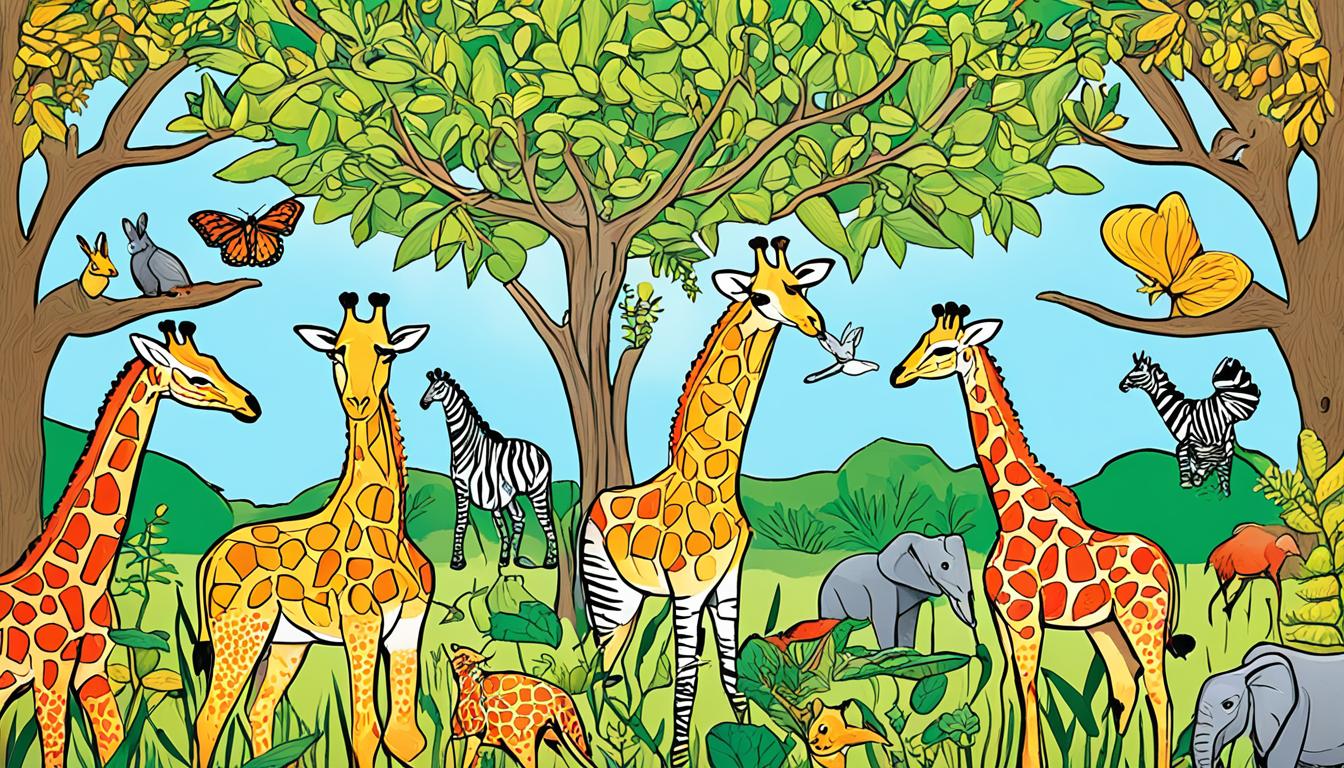
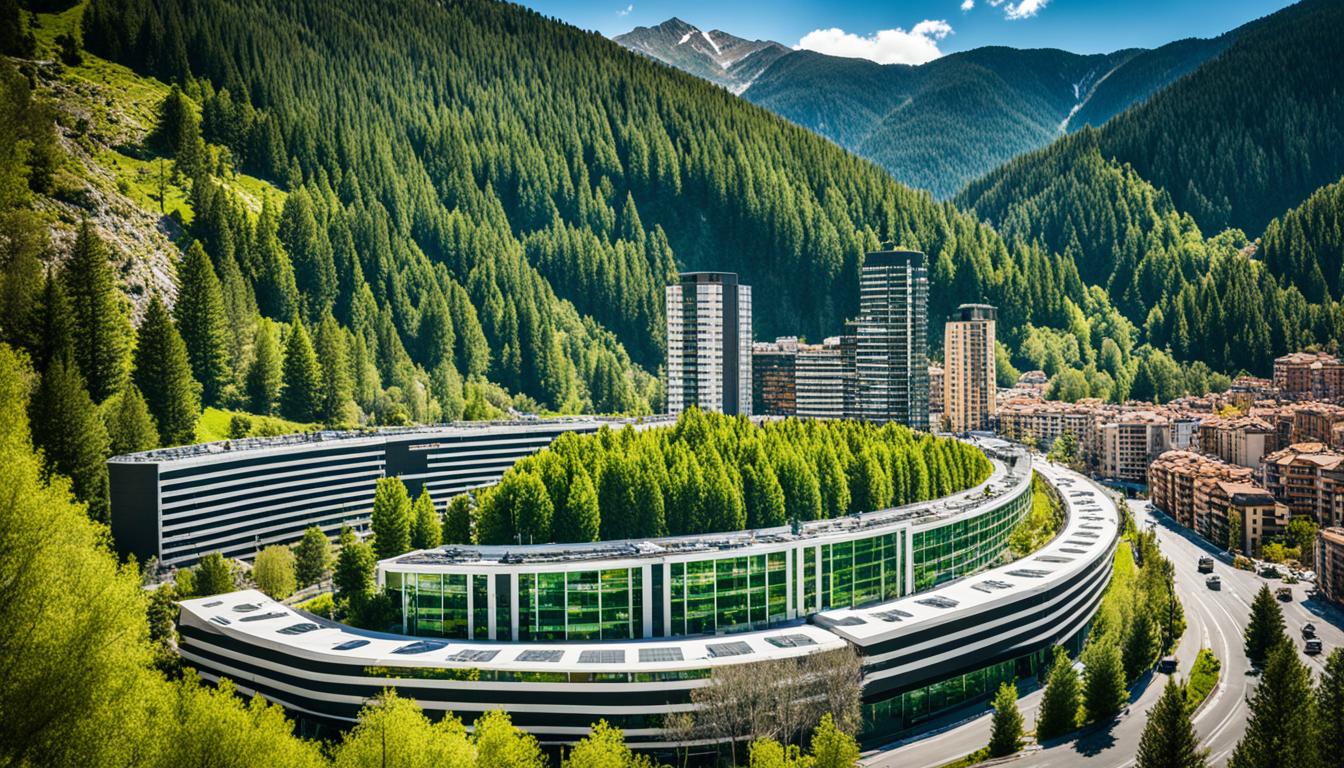


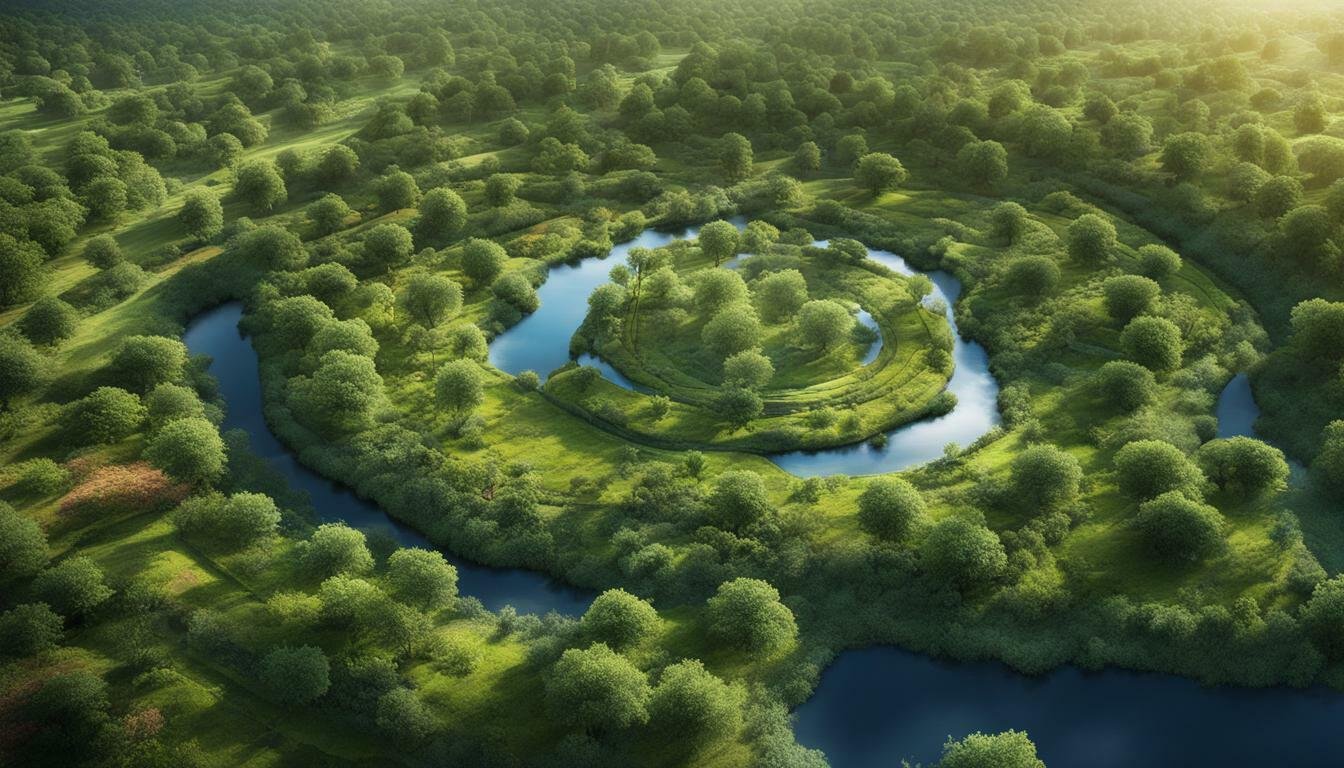

Afghanistan Biodiversity: Animal and Plant Species and What Is Under Threat
5 months ago[…] Despite these challenges, Afghanistan boasts an impressive diversity of species. The country is home to approximately 118-147 species of mammals, 472-510 species of birds, 92-112 species of reptiles, 6-8 species of amphibians, 101-139 species of fish, 245 species of butterflies, and 3500-4000 vascular plant species. However, the International Union for Conservation of Nature (IUCN) has identified 39 species and 8 subspecies as being globally threatened with extinction. […]